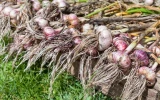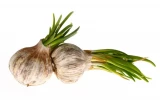Garlic Yield per Acre in Ontario & How to Boost Output
Garlic cultivation in Ontario embodies a significant aspect of local agriculture, influenced by a variety of factors including soil health, climate conditions, and agricultural techniques. This article will delve into the intricacies of garlic cultivation in Ontario, focusing on the factors that impact yield per acre and presenting targeted strategies to increase garlic production.
In Ontario, garlic yield per acre typically ranges from 10,000 to 15,000 pounds. Boosting output involves optimizing soil fertility, ensuring proper irrigation, using high-quality seed cloves, implementing crop rotation, and managing pests and diseases effectively.
Proper planting depth and spacing can also help maximize yield. As you read further, we'll also share other farming practices that can help increase garlic output per acre.
Summary
- Softneck garlic varieties, such as Silverskin and Artichoke, tend to yield higher (6,000 to 10,000 pounds per acre) compared to hardneck varieties (4,000 to 6,000 pounds per acre).
- For growers in Ontario, Rocambole and Porcelain are highlighted as optimal choices due to their rich flavor, cold hardiness, and suitability for the region's climate.
- Hardneck garlic, including varieties like Porcelain, Rocambole, and Purple Stripe, is well-suited for Ontario's cooler climate, offering robust flavors and complex profiles.

On this page:
- Garlic Varieties and Their Average Yield per Acre in Ontario
- Best Garlic to Grow in Ontario
- Average Yield per Acre for Different Regions
- Factors Affecting Garlic Production In Ontario
- Farming Practices to Boost Garlic Output
- Calculating Profit From Garlic Yield
- Best Time to Plant Garlic in Ontario Canada
Garlic Varieties and Their Average Yield per Acre in Ontario
| Variety Type | Example Varieties | Average Yield per Acre |
|---|---|---|
| Hardneck | Porcelain, Rocambole, Purple Stripe | 4,000 - 6,000 pounds |
| Softneck | Silverskin, Artichoke | 6,000 - 10,000 pounds |
When you're considering growing garlic in Ontario, you need to understand the different garlic varieties available to you and their corresponding yields per acre. The right selection can significantly influence your harvest.
Hardneck garlic makes it a well-suited variety in Ontario
Hardneck garlic is known for its robust flavor and complex profiles. Varieties like Porcelain, Rocambole, and Purple Stripe fall under this category.
They are distinguished by their stiff, central stalk and the formation of a scape (flower stalk) that often needs to be removed to encourage bulb growth. Here's a closer look at each:
- Porcelain: This variety is appreciated for its large, uniform cloves and strong, pungent flavor. Porcelain garlic is covered with a thick, white skin, making it relatively easy to peel. It's known for its excellent storage capabilities among hardneck varieties.
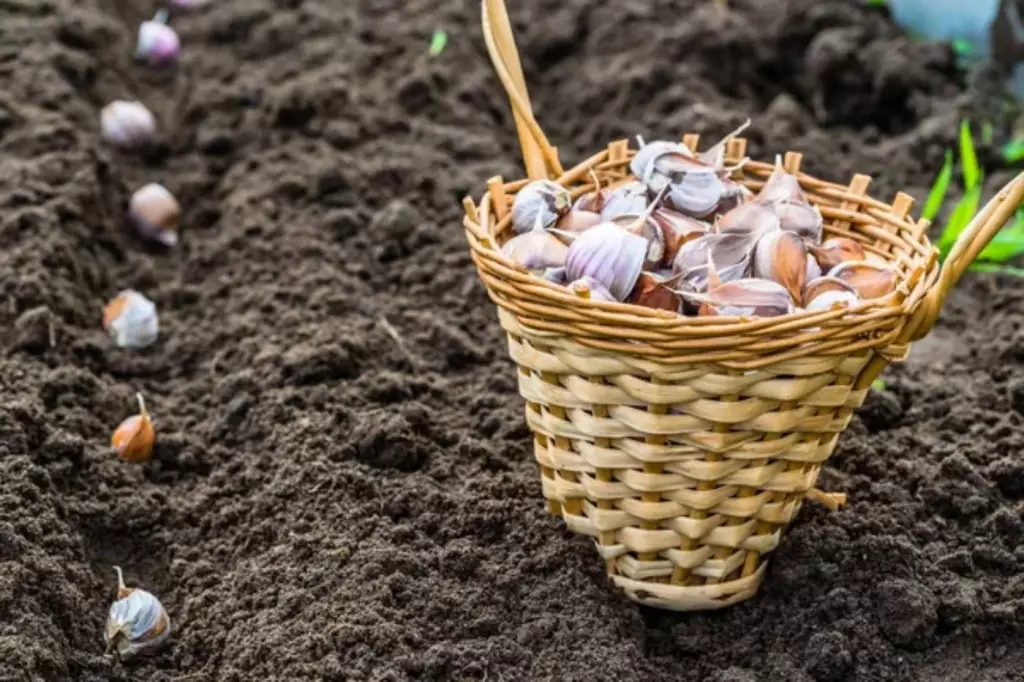
-
Rocambole: Rocambole garlic is prized for its exceptional taste and easy-to-peel clove skins. Its bulbs are typically covered with a thin, parchment-like skin. However, it tends to have a shorter shelf life than other varieties.
-
Purple stripe: Named for its distinctive purple striping on the bulb wrappers, this variety offers a milder taste for a wide range of culinary uses. Purple Stripe garlic is also known for its good storage life and beautiful appearance, making it a favorite among gourmet chefs.
Hardneck garlic thrives in cooler climates, making it well-suited for Ontario's weather. The average yield ranges from 4,000 to 6,000 pounds per acre, reflecting its preference for specific growing conditions.
Softneck garlic is renowned as a high-yield crop in Ontario
Softneck garlic varieties, including Silverskin and Artichoke, are generally more adaptable to a wider range of climates and are known for their longer storage life.
These types do not produce a central scape and tend to have more cloves per bulb, which are usually smaller than those of hardneck varieties. Here's more about each type:
-
Silverskin: Silverskin garlic is highly valued for its long storage life, making it the most common variety found in supermarkets. It features numerous small cloves and a strong, intense flavor. Silverskin varieties are often used for braiding due to their flexible stalks.
-
Artichoke: Named for its resemblance to the artichoke in clove configuration, this variety has a milder flavor and produces larger bulbs with more cloves. Artichoke garlic is known for its productivity and adaptability, making it a popular choice for commercial growers.
Softneck garlic is renowned for its higher yield potential in Ontario, with averages ranging from 6,000 to 10,000 pounds per acre.
This higher productivity, coupled with its longer shelf life, makes softneck varieties a compelling choice for both commercial cultivation and home gardening.
Best Garlic to Grow in Ontario
When choosing garlic varieties to grow in Ontario, consider the Rocambole family. Valued for its rich flavor, Rocambole thrives in Ontario's climate and is a chef's favorite. It’s cold hardy, requiring cold exposure to produce well.
Another optimal choice is Porcelain garlic, recognized for its large cloves and strong taste. This variety yields approximately 4-12 cloves per bulb, ideal for sizable harvests.
Last but not least, Purple Stripe garlic not only brings vibrant color to your garden but also adapts well to Ontario's conditions. It has a distinct look and taste that sets it apart from other types.
Average Yield per Acre for Different Regions
In Ontario, your garlic yield per acre can vary significantly based on climate and soil type. Understanding these factors helps you anticipate and plan for your annual production levels.
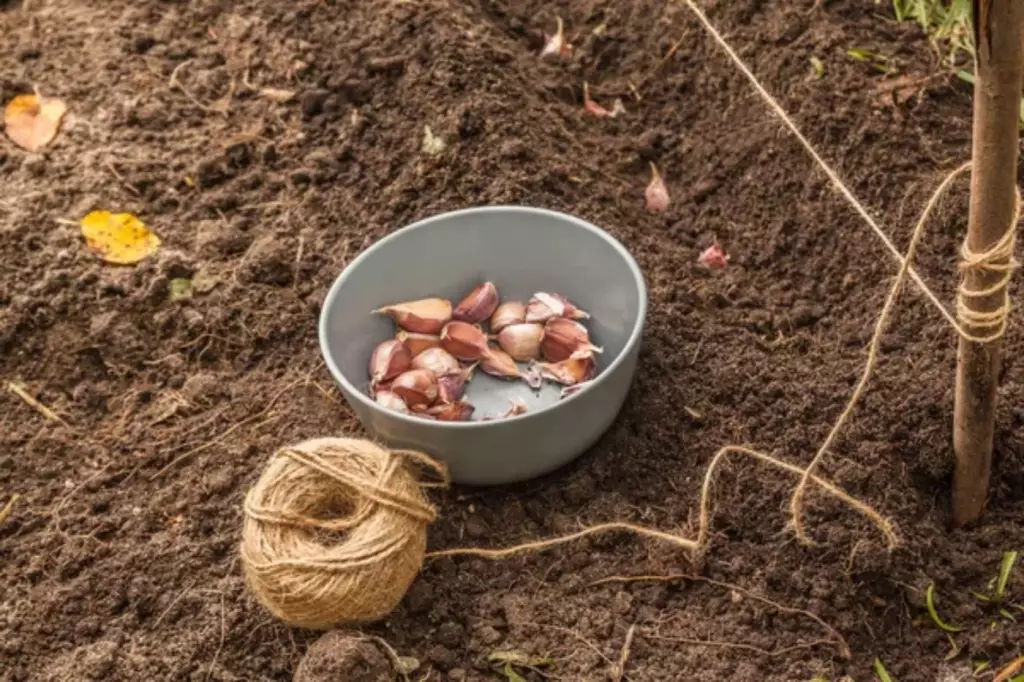
Impact of climate on yield
The climate in Ontario ranges from cold winters to warm summers, affecting your garlic's growth cycle.
In winter, garlic requires a cold period to initiate clove differentiation, but severe frost without adequate snow cover can damage the crop. Generally, garlic can withstand Ontario's winter chill, especially the hardy varieties.
During summer, consistent moisture and moderate temperatures promote optimal garlic growth, leading to higher yields. Your garlic production in Ontario could range from 10,000 to 15,000 pounds per acre, favoring softneck varieties in the warmer southern regions.
| Climatic Condition | Expected Impact on Yield |
|---|---|
| Warm, wet summer | Higher yield |
| Cold, dry winter | Reduced yield |
Soil types and regional yield variation
Soil type directly influences water retention, nutrient availability, and ultimately, the yield of garlic in Ontario. In regions with sandy soil, drainage is rapid which can lead to drought stress if not managed correctly.
| Soil Type | Characteristics | Yield Influence |
|---|---|---|
| Sand | Quick draining | May lower yield |
| Clay | Retains water | Can increase yield with proper management |
| Loamy | Well-draining | Typically leads to higher yield |
On the other hand, clay soils retain water well but can cause issues with root rot and fungal diseases if drainage is poor. Adding organic matter and using fertilizer wisely helps boost yields in both soil types.
Aim for well-draining loamy soil for the best results. Pay attention to your soil conditions throughout the growing season to ensure optimal garlic production.
Factors Affecting Garlic Production In Ontario
Below, let's look at the diverse factors that can affect your garlic farm's output.
Agronomic factors
When you plant garlic, spacing and planting densities are crucial; proper spacing allows for optimal growth.
The soil plays a major role in your harvest. Sandy soil with good drainage and high soil fertility reduces the risk of disease and increases yield. Additionally, irrigation needs careful management to meet the crop's water requirements without causing flooding.
Pests and disease management
Your garlic is prone to pests like the bulb and stem nematode, and diseases such as basal rot. Effective pest control and weed control are essential to protect your crops. Using disease-free seeds can prevent the spread of soil-borne diseases.
Genetic factors
The variety of garlic you choose to plant is a genetic factor that influences yield. Different varieties have different potential yields, with some yielding larger cloves. Choose a variety or clone from a robust parent plant to ensure a good start.
Weather conditions
Garlic requires a cold period for optimal growth, and yet extreme cold without proper cover can damage the crop. Weather conditions during the growing season affect moisture levels, which in turn affects both the fertility of the soil and the health of the plant.
Farming Practices to Boost Garlic Output
When aiming to boost garlic yield per acre in Ontario, focusing on specific farming practices is crucial. These practices are designed to optimize your garlic crop from planting to harvest.
Optimal planting techniques
Plant your garlic in the fall to allow for good root development before the winter, and make sure to space the cloves about 6 inches apart to give each plant enough room to grow.
Choose a sunny location with well-drained soil to prevent crusting and compaction which can damage the bulbs.
- Spacing: 6 inches apart
- Timing: Fall planting
- Location: Sunny, well-drained area
Soil management
Good soil management can greatly improve your garlic plants' health and yield. Your soil should be rich in organic matter, so incorporate well-aged manure or compost before planting.
Prevent weed competition with regular weeding or through the use of straw mulch, which also helps maintain soil moisture and temperature.
- Organic matter: Compost or aged manure
- Mulching: Apply straw mulch
- Weed management: Regular weeding
Fertilization strategies
Garlic benefits from careful fertilization strategies to enhance soil fertility. Apply a balanced fertilizer that provides nitrogen in the spring to support leaf growth.
As the bulbs begin to form in summer, switch to fertilizers that are higher in phosphorus and potassium to support root and bulb development.
- Spring fertilization: Balanced, nitrogen-rich fertilizer
- Summer fertilization: Higher in phosphorus and potassium
Bear in mind that proper irrigation plays a critical role throughout these stages, as both over-watering and under-watering can lead to reduced yields or poor bulb quality.
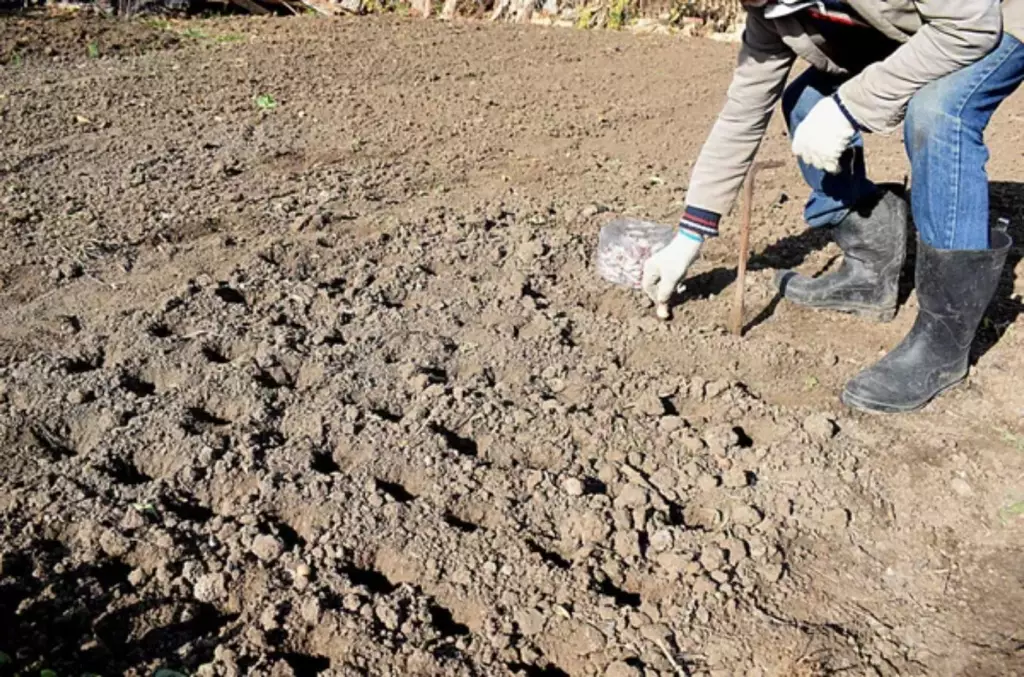
Keep your garlic well-hydrated, especially during dry spells, but take care to avoid waterlogging.
Calculating Profit From Garlic Yield
In assessing the profitability of garlic farming, you'll want to consider current market demands and specific costs associated with production. Let's break down these financial aspects.
Market trends and garlic demand
The demand for garlic in Ontario is influenced by its widespread use in both culinary and medicinal applications. Fresh whole bulbs are the primary product, but there's also a significant market for processed garlic, including powder.
Costs and revenue considerations
To calculate your possible profits, you need to analyze both expenses and revenues. Costs may include land preparation, planting, types of seed, care during the growing season, harvesting, storage methods, and processing.
Revenues will depend on the selling price, which can range between $1.50-$2.00 per pound. Here's an example calculation:
Cost Breakdown (per acre):
| Expense Category | Cost ($) |
|---|---|
| Land preparation | 500 |
| Planting & seeds | 1000 |
| Growing season care | 1500 |
| Harvesting | 1000 |
| Storage | 300 |
| Processing | 200 |
| Total costs | 4500 |
Revenue (per acre):
| Detail | Amount |
|---|---|
| Average yield (lbs) | 10,000 |
| Selling price per pound ($) | 1.75 |
| Total revenue | $17,500 |
Profit (per acre): $17,500 - $4500 = $13,000
For a more detailed discussion of garlic farming profitability, here's an article you can refer to.
Best Time to Plant Garlic in Ontario Canada
When you're looking to plant garlic in Ontario, timing is crucial. In this province, the optimal timeframe for planting garlic varies strongly, influenced by the specific regional climate.
In Southern Ontario, your planting window begins in early October and can extend until November. You need to get your cloves in the ground well before it freezes, to allow for root development before winter.
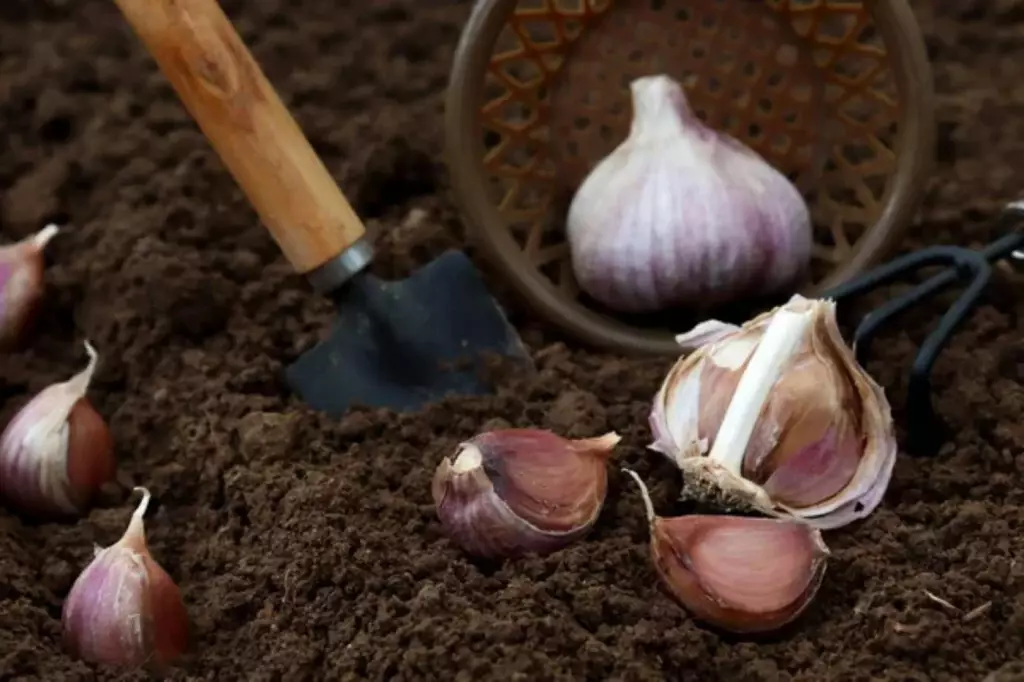
Northern Ontario has a shorter growing season, shifting the planting window earlier:
Plant too early, and you risk excessive top growth before winter. Plant too late, and the cloves may not have enough time to establish roots.
Aim to plant your garlic for about 4 to 6 weeks before the ground is expected to freeze.
For the best yield, ensure you're selecting cold-hardy varieties that can withstand Ontario's winters. Planting at the right time supports a robust garlic crop, setting the stage for a bountiful harvest come summer.
